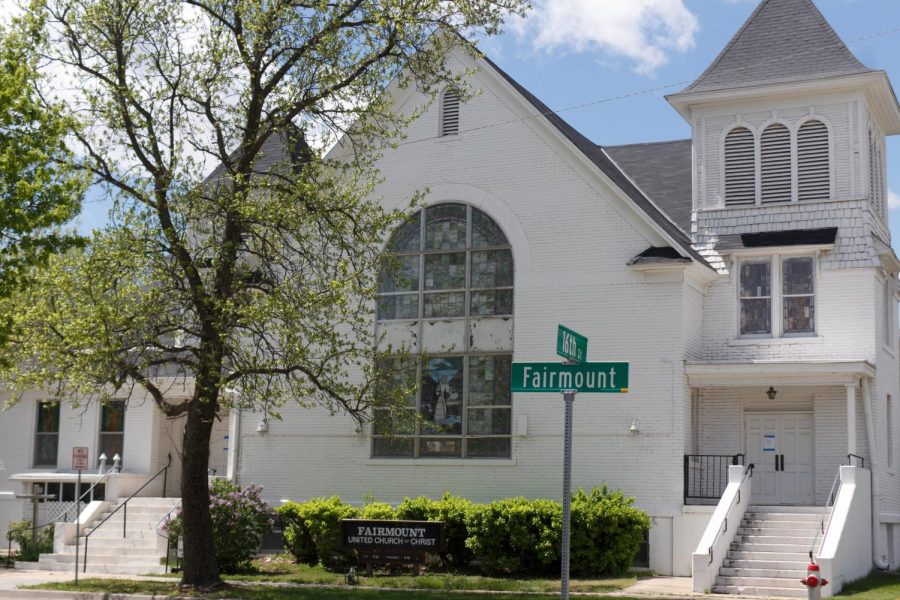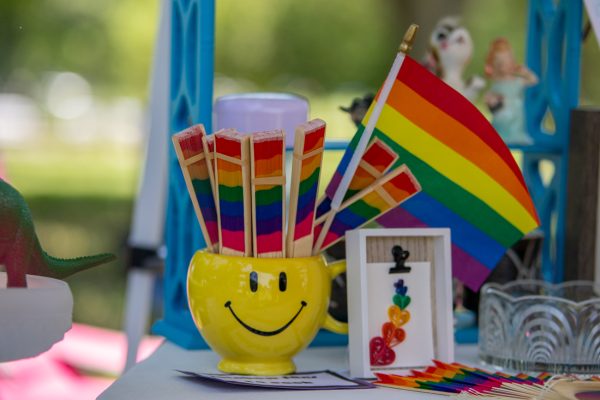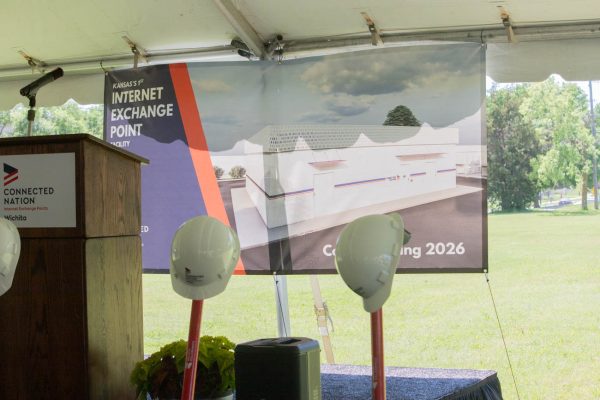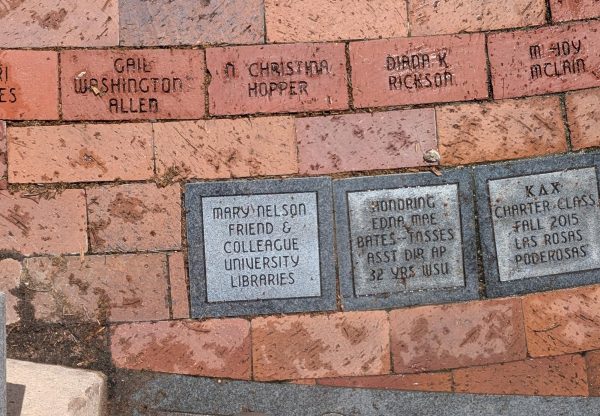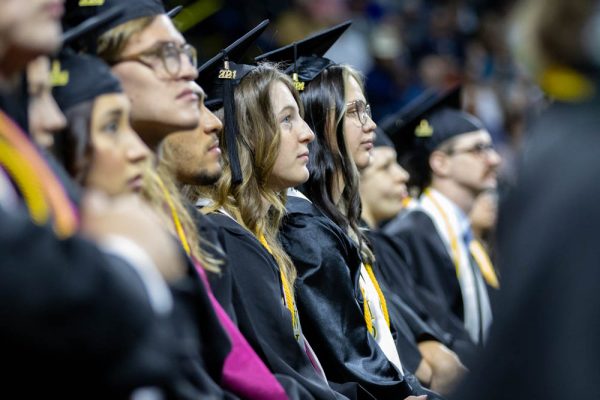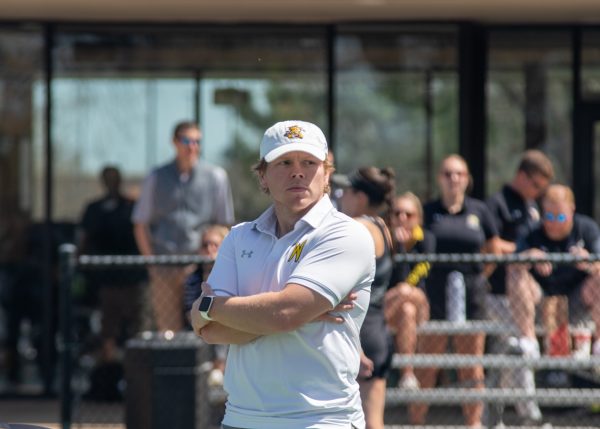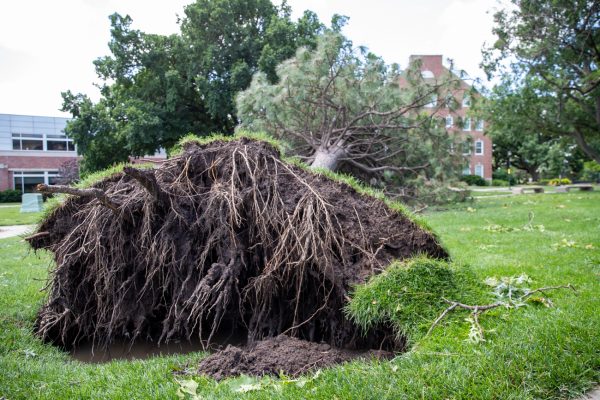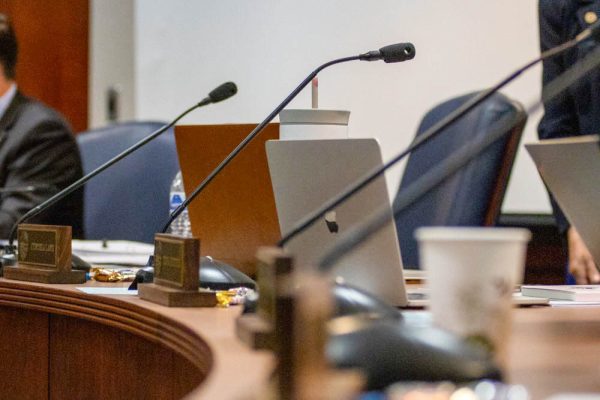‘Hope dies last’: Good Friday service was the last at Fairmount United Church of Christ
Services have not been held at Fairmount United Church of Christ on the corner of Fairmount and 16th streets since the building was closed for structural repairs in November. The church was built specifically for Fairmount College, now Wichita State. In 1892, the college opened as a co-ed congregational school. The school remained connected to the church until 1926 when it was given to the city for the first municipal college west of the Mississippi — known as the University of Wichita.
For the first time in more than a century, the pews of the Fairmount United Church of Christ were empty on Easter Sunday this year. Services have not been held at the church on the corner of Fairmount and 16th streets since the building was closed for structural repairs in December. It was supposed to be temporary.
One hundred and twenty-seven years after construction, the church hosted its final service on Good Friday — the darkest day of the year for Christians. It’s the day that recounts Jesus’ death by crucifixion, and congregations worldwide spend the day in prayer.
Good Friday services are usually somber, and the mood fit the day for the Fairmount congregation.
Jena Thomison, co-moderator of Fairmount Church, said she felt like she’d lost something. Or someone.
“To me, I’ve always thought of her as a person,” Thomison said of the church standing behind her.
Roughly two dozen people sat in metal folding chairs on the sidewalk in front of the church Friday to hear the pastor’s meditations, but Fairmount parishioners were few and far between. Members of the Pilgrim United Church of Christ congregation outnumbered Fairmount parishioners four to one.
With declining attendance and aging facilities, the only two United Church of Christ parishes left in Wichita decided to share Rev. Phil Hodson when they hired him — also combining administrative facilities and community outreach resources.
But they never planned to shut either church’s doors.
Hodson now leads Sunday services for Fairmount members a few miles away at Pilgrim Congregational Church United Church of Christ (UCC) on E. Harry Street. The 9:15 a.m is for Pilgrim parishioners and 11:15 service is for the Fairmount congregation.
“This building is a place of symbolism — a sacred object,” Hodson said Friday.
“Objects serve a function, they serve a purpose. And eventually, they will be replaced with new objects that fulfill the same function in a different time. Objects are not eternal.”
Hodson would know this better than most. On the first Sunday of Advent, as parishioners listened to Hodson’s sermon, a beam covering fell from the ceiling onto the pews below — pews that have been sparsely populated the last couple of years.
“That thing was 12 foot long,” Pilgrim United Church of Christ moderator Joe Perkins
said. “It probably weighed close to 250 pounds and it dropped 30 feet and just barely hit somebody during the worship service.
“I’ve always wanted to bring the house down with my sermons,” Hodson joked on Friday.
Nobody was injured, but the church had to close the building until its safety was assessed by the city. They brought in a structural engineer, who told them the ceiling was just one issue that needed to be addressed before the church could reopen. It was cost prohibitive for a small congregation to repair the aging worship space.
Rev. Michael Poage was Fairmount United Church of Christ’s longest serving pastor, leading the parish from 1993 until 2010.
“I grieve for the loss of the building but I believe the church, the Fairmount people, will continue to minister,” Poage wrote in an email to The Sunflower.
Former music director Brock Booker said Fairmount Church is rich with examples of progressive social action and political influence. They took a stand at times when it was an unorthodox to go against the status quo.
“Their history is a people that stood up for good causes, whether it was during the Brown vs. the Board era, whether it was during the women’s suffrage movement, or when to educate women was unheard of,” Booker said.
Fairmount Church has been involved in university life and helped keep the neighborhood afloat during the last couple decades, he said.
“In the most recent church newsletter I received, the current pastor gave as one reason for the‘demise’and sale of the building, the ‘changing neighborhood’ Poage wrote.
“The neighborhood CHANGED 50 years ago but the lay leadership of the church would not accept it. And therefore, never made a committed effort to create a new adventure (direction/ministry) for the church,” he wrote.
Poage said he thinks the closure was avoidable and doesn’t understand why the incident with the ceiling beam has been kept so quiet. Maybe people would have donated money or helped renovate if they’d known, he said. But the fact the church is struggling couldn’t have been news.
“Long before I came to Fairmount, the congregation considered moving to another, ‘more favorable’location, but they voted as a congregation to stay and be a neighborhood church,” Poage wrote.
He said that if they’d done this when he proposed it 1o years ago, this might have been avoided. But the church wasn’t interested.
“I was asked by a nearby mostly African American church whose pastor was a friend, if Fairmount would consider sharing space with his small congregation. I (and others) thought it was a great idea,” Poage wrote.
When he approached the church leadership, the idea was turned down. Poage said the arguments were that, “they would ‘mess up’ the church, they would bring drums, etc.”
He said that after 10 years of work against racism in Wichita, at WSU, and within Fairmount UCC, the response was frustrating.
“In the end, in my opinion, racism won the day, among other things brought about by those with money and ‘power,’” Poage wrote.
Attendance at the church has dwindled. Last year, the average attendance for a Sunday service was 35. It was the lack of money for repairs that did them in.
Parishioners are heart-broken.
There was very little information about the closure online. People wanted to be there for the last service but didn’t know it was happening.
“Whatever denomination or religious affiliation you come from, you can relate to the struggle of life, and the challenges in life, and how you have to get up every day to overcome through faith,” Booker said.
Poage said he wants the community to know that there’s hope.
“In the local language, there is a saying: ‘Nada zadnja umire’ or ‘Hope dies last.’ I am confident that the hope I saw in action at Fairmount United Church of Christ over the years will continue,” Poage wrote. “In the words of our denomination’s motto: ‘God Is Still Speaking.’”
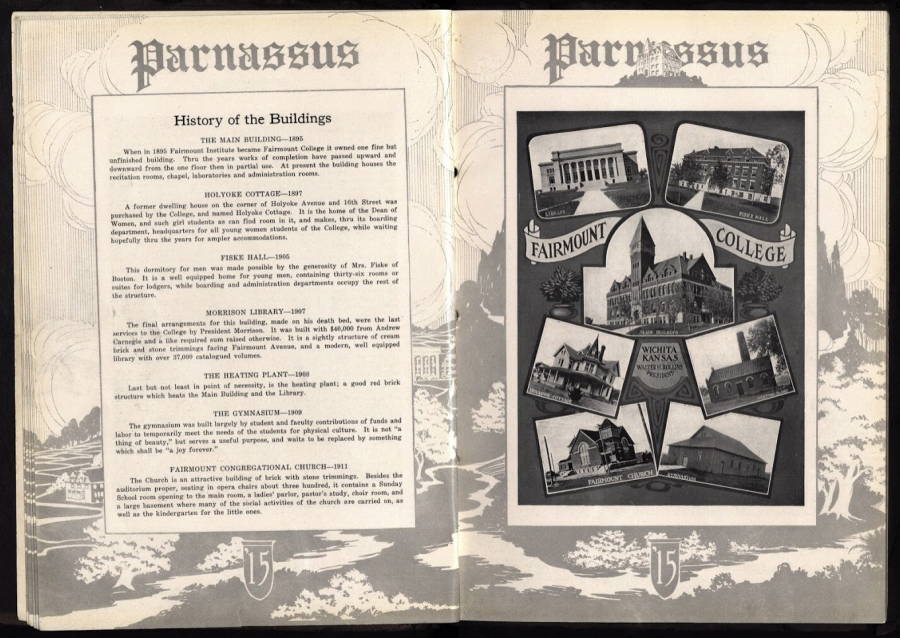
Fairmount United Church of Christ was built in 1910 and opened in 1911. It was built specifically for Fairmount College, which was founded in 1885 by Rev. J.H. Parker. Parker hoped to build a women’s college in the style of New England liberal arts colleges such as Holyoke and Vassar. That didn’t happen due to a financial crash that hurt Wichita badly, but in 1892, the college opened as a co-ed congregational school.
TIMELINE OF FAIRMOUNT CHURCH AND FAIRMOUNT COLLEGE (NOW WICHITA STATE UNIVERSITY)
- In 1886, Rev. Joseph Homer Parker founded a private congregational prep school known as “Wichita Ladies College” and “Congregational Female College.” It was part of a boom in college and university creation. In early 1887, developers of the adjacent Fairmount neighborhood donated land to this school, and it was renamed Fairmount College. Parker wanted it to be the “Vassar of the West,” so streets around the neighborhood were named after women’s colleges such as Vassar and Holyoke.
- Fairmount College classes began in 1895. All of the Fairmount College presidents were ministers in the Congregational Church, and the church was a draw for faculty members living on the Hill.
- The cornerstone of Fairmount Church was laid on June 10, 1910. Once completed, the church was dedicated in September, 1911.
- Church members, including many people with ties to Fairmount College, now WSU, have worshiped in the building for 127 years.
- Rev. L.C. Markham is credited with getting the church built, but he resigned his post shortly before its completion.
- Rev. Clayton B. Wells of Dallas, Texas succeeded Markham in 1911. Wells married the widow of professor W.H. Isely, the first dean of Fairmount College. Wells is renowned for being one of the first, possibly the first, minister to broadcast religious sermons on the radio in 1919. In 1926, he retired with the nickname “Pastor Emeritus”.
- Fairmount Church is listed as a historic building in state records. One reason cited in the building registry is Rev. Wells’s use of radio technology to broadcast sermons up to 500 miles away. The amateur radio station operator, Charles Stanley, who lived by the church, sent the sermons in Morse code to 1000 wireless operators who lived within 500 miles of Wichita. Some of them also transcribed the sermons and posted them in public places. Stanley began doing this after Wells halsted him for broadcasting on Sundays.
- In 1926, the Congregational Education Society gave Fairmount College to the city, and by a vote of the people, it became a public, non-denominational institution called The Municipal University of Wichita. It was the first municipal university west of the Mississippi. The common name for the school was Wichita University.
- When Fairmount Hall burned in 1929, the church housed classes and other activities until new space was constructed on campus.
- In 1964, the University of Wichita became Wichita State University — an institution governed by the Kansas Board of Regents.
Timeline based on records from:
Kansas Memory – part of the Kansas State Historical Society, the National Register of Historic Places, and Wichita State University Archives.
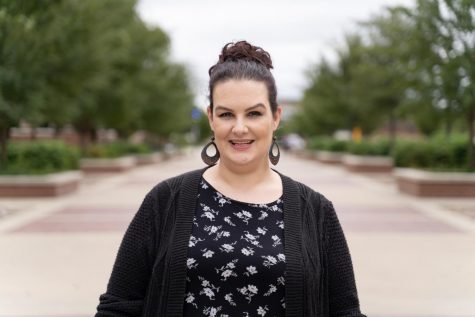
Audrey Korte was a reporter and the opinion editor for The Sunflower. She hosted The Sunflower News Podcast.



